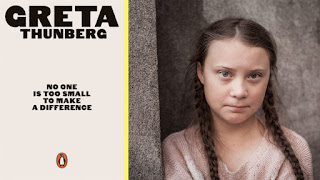I chanced upon this book at the State Central Library,
Trivandrum. Immediately I knew it was from Seagull Publications, Kolkata, for
the style of its production was unmissable. The title and the photograph that
adorned the cover reminded me of John Berger, the irresistible writer and art
historian. Later I came to know that the photograph was by Tina Modotti, an
Italian photographer, model and actress who became a Communist in 1930s. ‘Secure
the Base’ is a collection of speeches/essays by the Kenyan author and
post-colonial pacifist, Ngugi wa Thiong’o (pronounced Gugi Thiango).
Thiong’o speaks about the rifts that the colonial masters
had inflicted in the African countries. The rifts were not just political;
those were cultural, social and linguistic. After the Spaniards, Portuguese, Dutch
and the French, it was the British who made the schism complete. Four hundred
years of slavery, unrequited, unremitted and unkind labor exporting was the
foundation of the first world. Today, Thiong’o says that Pan-Africanism should
prevail and all the borders that the British created to create too many
countries within Africa for their divide and rule tactics should be turned into
domestic trade routes than political boundaries.
(Ngugi wa Thiong'o)
Pan Africanism, which has been there in the air since the aftermath
of the Second World War has been failed by the tribal identities attributed to
the African populations by the colonial masters. Thiong’o says that why a 9
million population in any region of Africa is called a Tribe while a four
million population in the Europe is called a nation, while the descriptive
components that define a nation and a tribe are more or less the same. He also problematizes
why the African languages are given secondary status while the lingua franca
and also the pedagogic mediums are still English and French. The tribal
conflicts are looked down upon and are not addressed as national ideological
schisms while even the smallest issues within the Euro-American regions are
treated not as tribal conflicts but internationally relevant politico-economic
issues to be addressed immediately.
Thiong’o calls out for linguistic revival among the African
countries and he insists that there should be major dialects, English and
French functioning as bridge languages within the African continent. Pan
Africanism is not just a cultural and linguistic argument but a demand for
economic autonomy which is heavily curtailed by the post WW II phenomena called
World Trade Organization (WTO), International Monetary Fund (IMF) and General
Agreements on Tariffs and Trades (GATT). If colonialism and slavery were the
problems of the yester years today it is debt dependency that functions as the
stranglehold in the neck of the African continent. The so called wealthy G8
countries do not allow any African countries to develop their nuclear armaments
while they use the African continent for conducting nuclear experiments.
(Africa)
To overcome this situation, Thiong’o argues that the African
voice should be heard and he is one of the pioneering voices from within the
modern Africa and has been relentlessly trying to make Africa visible by
challenging the appellations like ‘Dark Continent’ and ‘Backwardness’ etc. He
says that the intellectuals have a lot of work to do towards this. He also
makes clear distinction between globalization and globalism: ‘The visible success
of globalization is a glossy middle class; that of globalism is prosperous
creative people, their common humanity expressed in the multicoloured
particularities. (P 60).
Thiong’o’s faith in culture and literature is expressed in
the following lines: “Political authoritarianism is terrified of the power of
the word that has become flesh. It loves the word that has been dislodged from
the flesh. The challenge for the intellectual is to make words become flesh, to
make them breathe distinctly. Theory must always return to the earth to get
recharged. For the world that breathes life is still needed to challenge the
one that carries death and devastation. Works of imagination and critical
theories can only weaken themselves by pulling back from the challenge.”
(P.112).The more one reads this the more one understands India and its colonial
past. A must read book.
JohnyML

















